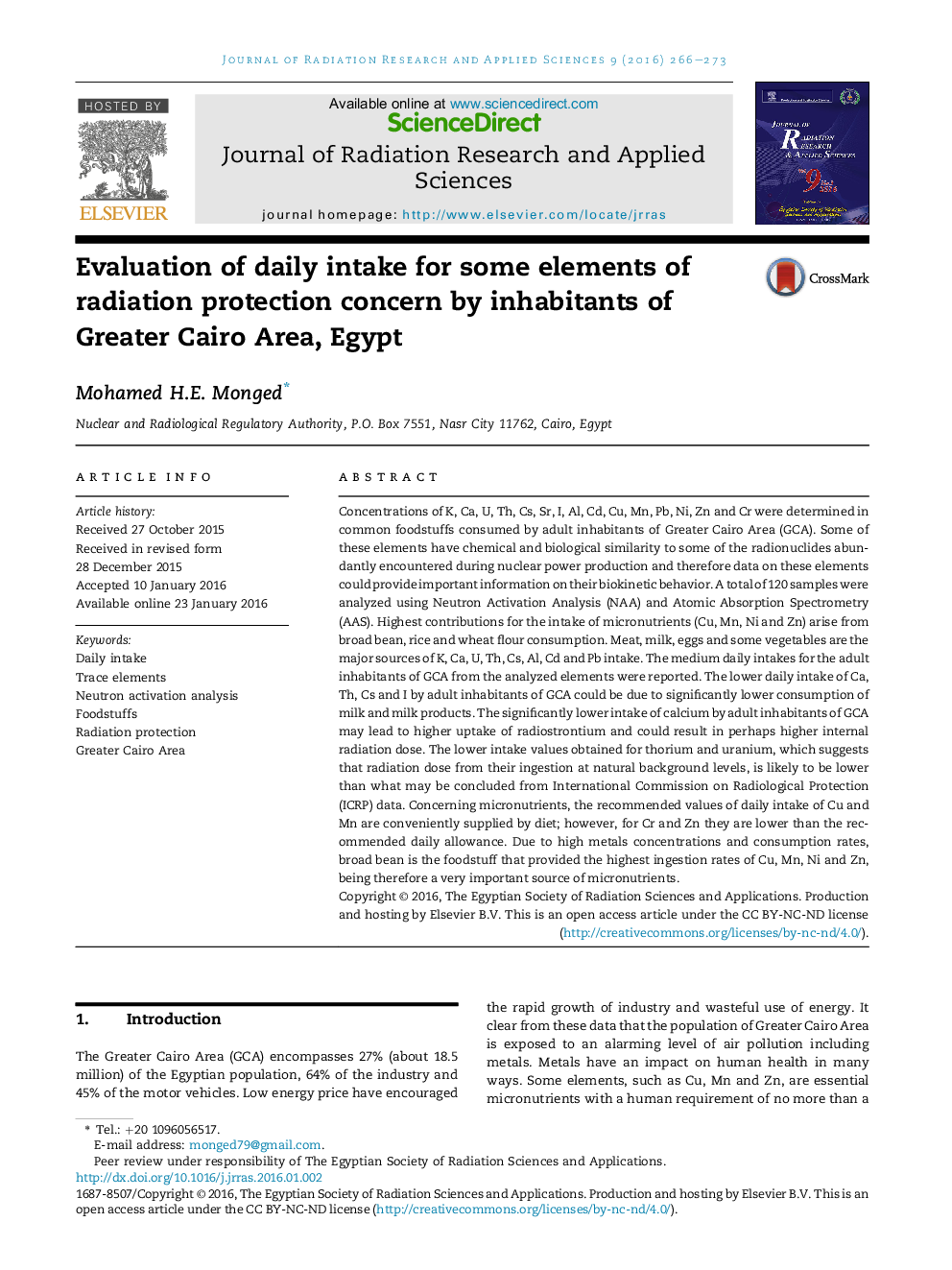| کد مقاله | کد نشریه | سال انتشار | مقاله انگلیسی | نسخه تمام متن |
|---|---|---|---|---|
| 1570242 | 1398627 | 2016 | 8 صفحه PDF | دانلود رایگان |
Concentrations of K, Ca, U, Th, Cs, Sr, I, Al, Cd, Cu, Mn, Pb, Ni, Zn and Cr were determined in common foodstuffs consumed by adult inhabitants of Greater Cairo Area (GCA). Some of these elements have chemical and biological similarity to some of the radionuclides abundantly encountered during nuclear power production and therefore data on these elements could provide important information on their biokinetic behavior. A total of 120 samples were analyzed using Neutron Activation Analysis (NAA) and Atomic Absorption Spectrometry (AAS). Highest contributions for the intake of micronutrients (Cu, Mn, Ni and Zn) arise from broad bean, rice and wheat flour consumption. Meat, milk, eggs and some vegetables are the major sources of K, Ca, U, Th, Cs, Al, Cd and Pb intake. The medium daily intakes for the adult inhabitants of GCA from the analyzed elements were reported. The lower daily intake of Ca, Th, Cs and I by adult inhabitants of GCA could be due to significantly lower consumption of milk and milk products. The significantly lower intake of calcium by adult inhabitants of GCA may lead to higher uptake of radiostrontium and could result in perhaps higher internal radiation dose. The lower intake values obtained for thorium and uranium, which suggests that radiation dose from their ingestion at natural background levels, is likely to be lower than what may be concluded from International Commission on Radiological Protection (ICRP) data. Concerning micronutrients, the recommended values of daily intake of Cu and Mn are conveniently supplied by diet; however, for Cr and Zn they are lower than the recommended daily allowance. Due to high metals concentrations and consumption rates, broad bean is the foodstuff that provided the highest ingestion rates of Cu, Mn, Ni and Zn, being therefore a very important source of micronutrients.
Journal: Journal of Radiation Research and Applied Sciences - Volume 9, Issue 3, July 2016, Pages 266–273
